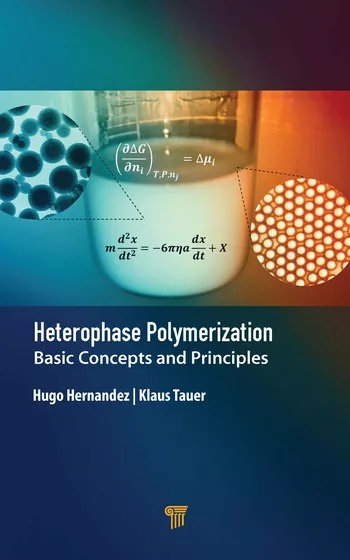Methylene Chloride: Myth, Legend and Facts

With these advantages, MEC would seem to be an ideal solvent for a variety of industrial processes. In fact, it has widespread application in paint stripping, aerosol formulations, chemical processes, pharmaceutical processes, urethane foam blowing, metal cleaning and degreasing, and electronic cleaning.
It is important to note that MEC is safe to use, when all appropriate health and safety procedures are followed. These procedures are outlined in the Chlorinated Solvents Product Stewardship Manual and the material safety data sheet for methylene chloride, both of which are published by Dow, the world's largest producer of MEC.
A number of laboratory and epidemiological studies have been made on MEC, making it one of the best understood of the industrial solvents, and the overall consensus of these is that methylene chloride is not likely to cause health problems in humans when properly used. Because, however, some sources have raised questions about the safe use of the solvent, a brief review of the outstanding studies that have been made will be presented.
Health Studies
One study that calls MEC into question is the National Toxicology Program (NTP) study released in 1985. The NTP concluded that its study showed "clear evidence of carcinogenicity" based on malignant and benign lung and liver tumors in laboratory mice, and "some evidence of carcinogenicity" based on benign mammary tumors in laboratory rats.Although this is generally accepted as a valid animal study, some scientists question its relevance to humans. They point out that extremely high exposures of MEC were used, and that among the animals studied was a species of mouse that already had a high spontaneous occurrence of lung and liver tumors. In addition, an industry-sponsored study determined that the lung tumors observed in these mice most probably resulted from damage to Clara cells, a type of lung cells that are much more numerous in mice than in humans. Consequently, mice as a species may be an inappropriate model for humans.
Other studies that have provided data on the health profile of MEC include the following.
These findings, as well as data derived from extensive studies of workers who have been exposed to MEC, support Dow's position that MEC can continue to be used safely, as long as appropriate ventilation and good industrial hygiene practices are observed. Dow is in full agreement with the statement of the Halogenated Solvents Industry Alliance (HSIA): "On the basis of this available evidence, methylene chloride does not appear to pose a health hazard to humans under normal conditions of occupational exposure and when products are used in accordance with manufacturers' instructions. It is nevertheless important that workplace activities and user operations should continue to be carried out in such a way as to keep exposure as low as is reasonably practicable."
Regulatory Actions
Because methylene chloride is so widely used and has been studied so thoroughly, its use is subject to a number of federal, state, and local regulations. Users of the solvent should be aware of this legislation and careful to follow it. To help customers meet these regulations, Dow's literature contains information on how to minimize vapor release and worker exposure, and members of Dow's technical service staff are available to help with specific problems.Among the U.S. federal regulations are:
- OSHA. The current Occupational Safety and Health Administration permissible exposure limit (PEL) for methylene chloride is 25 parts per million (ppm), with a short-term exposure limit (STEL) of 125 ppm and an action level of 12.5 ppm. The rule also contains provisions on exposure and medical monitoring, labeling, protective equipment, and record keeping.
- CPSC. The Consumer Product Safety Commission issued a Statement of Policy, rather than a formal rule, for household products containing MEC. This designates MEC as a hazardous substance under the Federal Hazardous Substance Act and establishes labeling guidelines for all consumer products containing it. Labels must include this statement: "Methylene chloride has caused cancer in certain laboratory animal tests. Risk to your health depends on duration and level of exposure."
- FDA. The Food and Drug Administration published a final rule, effective August 28, 1989, banning the use of MEC in cosmetics, in particular aerosol hairsprays. The use of the solvent in hairsprays had already virtually ceased in the United States prior to the effective date, but the agency considered the regulation necessary to ensure that all hairspray manufacturers cease using MEC, that no hairsprays containing MEC are imported, and that no new hairsprays or other cosmetics using MEC as an ingredient are introduced on the market. FDA did not, however, ban the use of MEC in coffee decaffeination, noting that risk is negligible for MEC in this process, nor in pharmaceutical products.
- CAAA. MEC is regulated under Title III of the Clean Air Act Amendments of 1990, where it is classified as one of 189 HAPs. Applications that emit one or more of these HAPs are regulated under National Emission Standards for HAPs (NESHAPs), which typically require engineering controls along with operating, maintenance and record-keeping practices to minimize emissions.
Because of its negligible photochemical reactivity, MEC is exempt from CAAA regulations governing VOCs that act as precursors of smog, and most states also do not control the solvent as a VOC. Some states, however, exercising their right to enact regulations more stringent than the federal guidelines, do control MEC in some or all of their VOC rules. Readers should contact their local regulatory authority for the status of MEC in their area.
MEC is also exempt from CAAA regulations governing ozone-depleting substances (ODS). In fact, the Significant New Alternatives Program (SNAP) for ozone depleting substances, issued by the EPA on March 18, 1994, permits the use of MEC as one of the acceptable alternatives to ODSs. This rule applies to applications in surface cleaning, aerosols, adhesives, coatings and inks. The EPA has stated, however, that these alternative solvents should be used in aerosols only when non-flammability is a critical factor.
- SARA. Under the Superfund Amendments and Reauthorization Act of 1986, Title III, Section 313, MEC is subject to reporting requirements. It is also included in the categories of "immediate health hazard" and "delayed health hazard" under sections 311 and 312 of the same title.
- SDWA. Under the Safe Drinking Water Act of 1986, the maximum contaminant level (MCL) for MEC has been proposed at 5 parts per billion (ppb), with a maximum contaminant level goal of 0 ppb.
Despite the apparent stringency of these regulations, most users of MEC should have little difficulty meeting and exceeding their requirements. A variety of engineering practices are available to reduce workplace vapor emissions. A number of equipment manufacturers, also, have designed totally enclosed vapor degreasing machines for MEC and other chlorinated solvents; many of these have been shown to have virtually no vapor emissions.
For more information on methylene chloride, visit www.chlorinatedsolvents.com.
Looking for a reprint of this article?
From high-res PDFs to custom plaques, order your copy today!







